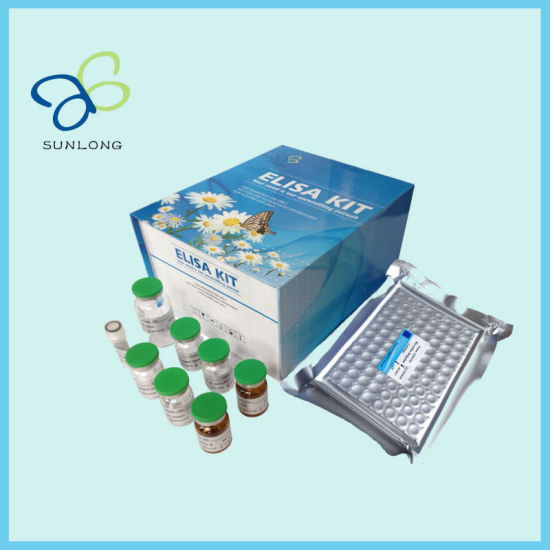Specifications:
| Application | ELISA-Based Assays |
| Storage Temperature | 2-8°C |
| Product Type | Elisa Kit |
| Product Grade | Molecular Biology |
The Serotonin (ST) ELISA Kit is a versatile tool designed for the detection and quantification of serotonin levels in various biological samples, including serum, plasma, urine, cell culture supernatants, and tissue extracts. Proper sample preparation is crucial to achieving accurate and reliable results.
1. Serum Preparation
- Blood Collection:
- Collect whole blood into appropriate tubes without anticoagulants.
- Clot Formation:
- Leave the blood undisturbed at room temperature for 10–20 minutes to allow clotting.
- Centrifugation:
- Centrifuge at 2,000–3,000 rpm for 20 minutes.
- Supernatant Collection:
- Carefully collect the clear serum without disturbing the clot.
- Additional Centrifugation:
- If precipitates form during storage, centrifuge the serum again before use.
2. Plasma Preparation
- Blood Collection with Anticoagulants:
- Use tubes containing EDTA or citrate as anticoagulants.
- Mixing and Incubation:
- Mix gently and incubate at room temperature for 10–20 minutes.
- Centrifugation:
- Centrifuge at 2,000–3,000 rpm for 20 minutes.
- Supernatant Collection:
- Carefully collect the plasma supernatant.
- Additional Centrifugation:
- Re-centrifuge the plasma if precipitates form during storage.
3. Urine Samples
- Sample Collection:
- Collect urine into sterile, aseptic tubes.
- Centrifugation:
- Centrifuge at 2,000–3,000 rpm for 20 minutes.
- Supernatant Collection:
- Carefully collect the clear supernatant.
- Additional Centrifugation:
- If precipitates appear during storage, centrifuge the sample again.
Note: The preparation process for cerebrospinal fluid and pleuroperitoneal fluid follows the same protocol as urine samples.
4. Cell Samples
Secretions (Supernatants):
- Collection:
- Collect cell culture supernatants into aseptic tubes.
- Centrifugation:
- Centrifuge at 2,000–3,000 rpm for 20 minutes.
- Supernatant Collection:
- Carefully collect the clear supernatant.
Intracellular Components:
- Cell Suspension:
- Dilute cells to 1 × 10⁶ cells/mL with PBS (pH 7.2–7.4).
- Cell Lysis:
- Freeze and thaw the cells repeatedly to release intracellular serotonin.
- Centrifugation:
- Centrifuge the lysate at 2,000–3,000 rpm for 20 minutes.
- Supernatant Collection:
- Carefully collect the clear supernatant.
- Additional Centrifugation:
- Re-centrifuge if precipitates appear during storage.
5. Tissue Samples
- Sample Collection and Storage:
- Cut and weigh tissue samples, freeze in liquid nitrogen, and store at -80°C until use.
- Homogenization:
- Homogenize the tissue in PBS (pH 7.4) while maintaining a temperature of 4°C.
- Centrifugation:
- Centrifuge the homogenate at 2,000–3,000 rpm for 20 minutes.
- Supernatant Collection:
- Carefully collect the clear supernatant for the ELISA assay.
- Aliquoting:
- Divide the supernatant into aliquots for immediate testing or future use.
General Notes
- Timely Processing:
- Perform sample preparation and ELISA assay as soon as possible after collection.
- If immediate testing is not possible, store samples at -20°C. Avoid repeated freeze-thaw cycles to preserve sample integrity.
- Avoid Sodium Azide (NaN₃):
- Sodium azide inhibits HRP activity and should not be present in any samples or reagents.
- Sterile Technique:
- Use aseptic techniques to prevent contamination during sample handling.
Key Considerations
- Maintain consistent centrifugation speeds (2,000–3,000 rpm) and durations to ensure uniform sample preparation.
- Use clean and sterile equipment for sample collection and handling.
- Ensure sample volumes meet the kit’s requirements for accurate results.
Conclusion
By following these detailed sample preparation steps, you can ensure the accuracy and reliability of serotonin quantification using the Serotonin (ST) ELISA Kit. Proper preparation minimizes variability and maximizes the sensitivity and specificity of the assay.
- Antibody Source: Rat Human Mouse borvine




 0
0
